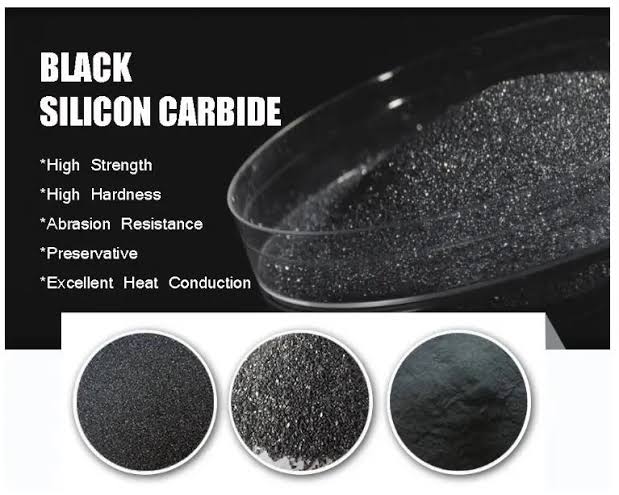1. Introduction to Silicon Carbide in Sandblasting
Silicon carbide, often abbreviated as SiC, is a compound of silicon and carbon that has become a preferred material in the realm of sandblasting. Due to its hardness, sharpness, and ability to maintain its integrity in aggressive environments, it is now widely recognized as a go-to abrasive. Whether preparing metal surfaces, cleaning industrial machinery, or refining precision tools, silicon carbide stands out in its capacity to provide efficient, consistent results.
2. The Evolution of Sandblasting Techniques
Sandblasting has experienced a considerable transformation since its inception. From simple methods of propelling sand against surfaces to the introduction of silicon carbide , the industry has evolved in leaps and bounds.
2.1 Early Abrasive Methods
In the early days of sandblasting, abrasives such as silica sand were the norm. While effective, these materials were not without their drawbacks, including slow operation speeds and high wear on the blasting equipment. The advent of harder abrasives was essential to improving the efficiency of the process.
2.2 Introduction of Silicon Carbide as a Game-Changer
The introduction of silicon carbide revolutionized the industry. Its extreme hardness—ranking just below diamonds—made it an ideal abrasive for faster cutting and smoother finishes. Over time, it has become an irreplaceable asset in various sandblasting applications.
3. What Makes Silicon Carbide Unique?
Silicon carbide’s distinctive properties have made it a mainstay in demanding industrial applications. A combination of chemical, physical, and mechanical attributes allows it to outperform other common abrasives.
- Chemical Composition: Silicon carbide is a compound of silicon and carbon, providing high chemical stability, even at elevated temperatures.
- Physical Properties: It boasts a hardness of 9.5 on the Mohs scale, making it one of the hardest materials available for sandblasting.
- Durability: Its inherent toughness ensures that it lasts longer than many alternative materials, providing better value over time.
4. Types of Silicon Carbide Used in Sandblasting
Silicon carbide is not a one-size-fits-all solution. There are two primary types, each with its own specific applications and strengths.
4.1 Black Silicon Carbide
Black silicon carbide is more affordable and slightly less hard than its green counterpart. It is commonly used in a variety of industrial processes, including cleaning, deburring, and surface preparation.
4.2 Green Silicon Carbide
Green silicon carbide is the purest form and harder than black silicon carbide. It is often reserved for precision tasks such as fine polishing and grinding, where a more refined finish is required.
5. Applications of Silicon Carbide in Sandblasting
Silicon carbide’s versatility means it can be applied in numerous sandblasting scenarios. Its unparalleled hardness and ability to remove material quickly make it indispensable in various sectors.
- Surface Preparation: It is frequently used to prepare surfaces for coatings or bonding by removing contaminants and creating a texture that promotes adhesion.
- Deburring and Cleaning: Silicon carbide excels in removing burrs and cleaning intricate parts without damaging their structural integrity.
- Paint and Rust Removal: The material’s sharpness enables it to strip away paint and rust with efficiency, leaving surfaces clean and ready for further treatment.
6. Industrial Use Cases for Silicon Carbide Sandblasting
Several industries have incorporated silicon carbide sandblasting into their daily operations, benefiting from the material’s precision and speed.
6.1 Automotive Industry
The automotive sector uses silicon carbide to remove paint, clean parts, and prepare surfaces for coatings. Its durability and rapid cutting speed make it ideal for this fast-paced industry.
6.2 Aerospace Components
Aerospace manufacturers rely on silicon carbide to deburr, clean, and prepare high-performance materials that are essential for flight safety and precision engineering.
6.3 Metal Fabrication
In metalworking, silicon carbide is indispensable for cleaning welds, removing rust, and ensuring that metal surfaces are adequately prepared for further processing.
7. Benefits of Silicon Carbide over Other Abrasives
Silicon carbide offers numerous advantages compared to traditional abrasives. These include faster material removal, better finish quality, and reduced overall costs due to its longevity.
- Faster Cutting Speed: Silicon carbide’s sharp edges allow it to cut through materials more quickly than alternatives like aluminum oxide.
- Enhanced Surface Finish: The sharpness of the particles results in smoother finishes, reducing the need for further refinement.
- Longer Lifespan: Its durability means less frequent replacement, contributing to lower operational costs over time.
8. Environmental Impact of Silicon Carbide Sandblasting
While effective, the use of silicon carbide in sandblasting also raises environmental considerations. Managing the dust and recycling the spent abrasive can mitigate some of the negative impacts associated with this process.
8.1 Eco-Friendly Abrasive Alternatives
Although silicon carbide is a non-renewable resource, it can often be reused multiple times before becoming waste. Some industries are exploring alternative eco-friendly abrasives, though few match the performance of silicon carbide.
8.2 Dust Control and Recycling
Advanced filtration and dust control systems can reduce the environmental footprint of silicon carbide sandblasting. Additionally, the ability to recycle the abrasive prolongs its usability, reducing waste.




